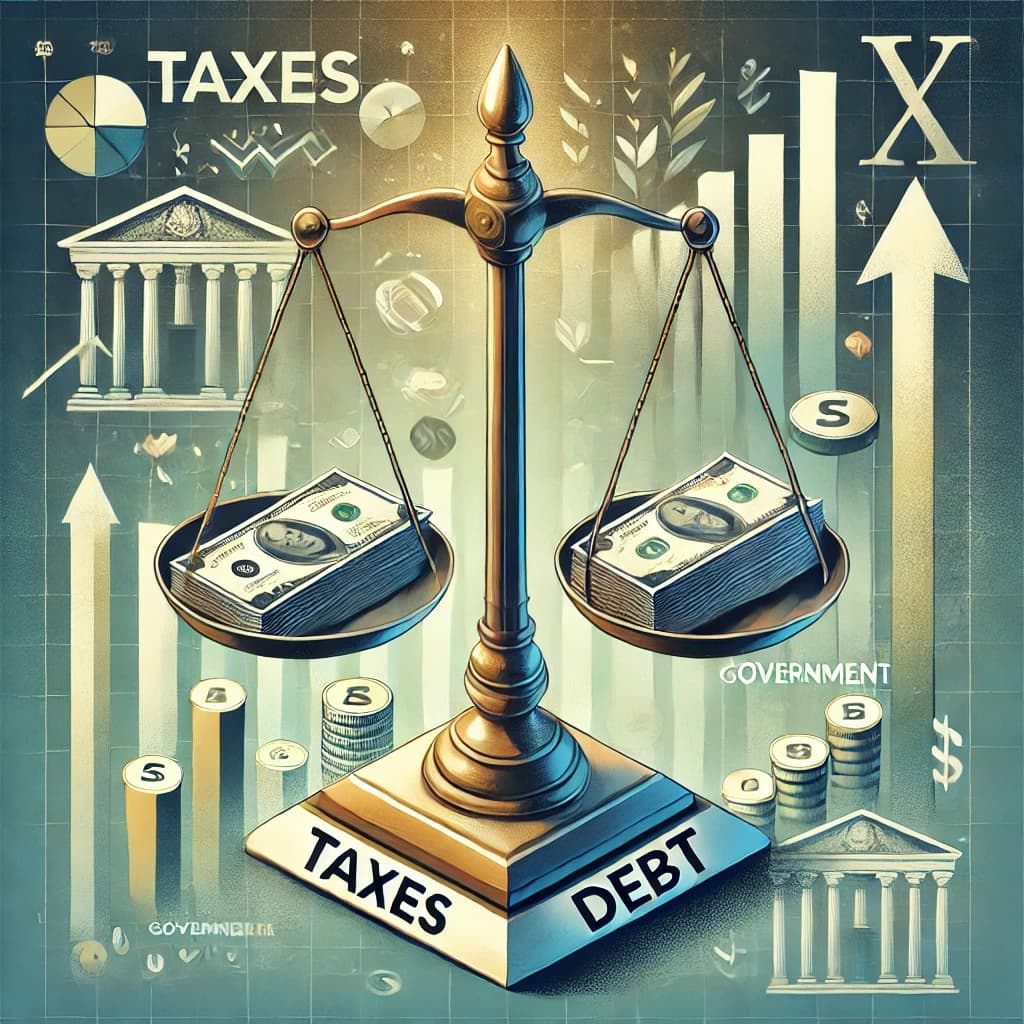What is Ricardian Equivalence? Understanding the Basics

Table of Content
- What Is Ricardian Equivalence?
- Breaking It Down with a Simple Example
- Scenario 1: Raising Taxes Today
- Scenario 2: Borrowing Money Today
- Does Ricardian Equivalence Work in Real Life?
- Example: Government Debt and Inflation
- Why Should You Care About Ricardian Equivalence?
- Real-World Application: The COVID-19 Stimulus
- Open Questions: Is It Just a Theory?
When governments spend money, they have two main options to pay for it: raising taxes or borrowing money. But does it really matter which option they choose? The Ricardian Equivalence Theory says it doesn’t—at least in theory! This idea, introduced by economist David Ricardo and later developed by Robert Barro, suggests that people behave as if they know the government debt today means higher taxes tomorrow. Let’s break this down with a simple example.
What Is Ricardian Equivalence?
Imagine you live in a small town, and the local government decides to build a new park. They can either:
- Collect extra taxes from residents immediately.
- Borrow the money now and promise to repay it in the future (with interest).
According to Ricardian Equivalence, whether they raise taxes today or borrow money, it makes no difference to the people in the town. Why? Because the town’s residents know that if the government borrows money now, they’ll eventually have to pay it back through higher taxes in the future.
So, residents will plan their spending accordingly. If taxes aren’t raised today, people will save money now, expecting higher taxes later. In other words, they adjust their behavior as if they’re already paying the future tax bill.
Breaking It Down with a Simple Example
Let’s say a family has $100 of disposable income every month. The government announces it will spend $1,000 to build the park.
Here’s what happens under the two scenarios:
Scenario 1: Raising Taxes Today
The government immediately raises taxes by $10 per month for each family to cover the cost of the park. The family’s disposable income drops to $90 a month, and they adjust their budget by spending less on dining out or entertainment.
Scenario 2: Borrowing Money Today
The government borrows the $1,000 instead. The family keeps their $100 disposable income for now, but they know taxes will go up in the future to repay the debt. So, they might decide to save $10 a month now to prepare for the expected tax increase later.
In both scenarios, the family adjusts their finances, leaving their overall consumption unchanged. This is Ricardian Equivalence in action: it doesn’t matter whether the government taxes today or borrows today; people will plan for the future accordingly.
Does Ricardian Equivalence Work in Real Life?
While this theory sounds logical, real life is more complicated. There are several reasons why Ricardian Equivalence might not hold:
- People don’t always think about future taxes. Not everyone is a long-term planner. Some might spend all their money today without worrying about future tax hikes.
- Borrowing and saving habits vary. Some people may not have enough income to save for future taxes, especially those living paycheck to paycheck.
- Government debt might impact the economy differently. If the government borrows too much, it could lead to inflation or higher interest rates, which affect everyone.
Example: Government Debt and Inflation
Imagine a government borrows a huge amount to fund various projects. If this borrowing drives inflation up, people’s savings lose value, and their purchasing power decreases. In this case, the impact of borrowing is felt immediately, not just in the future.
Why Should You Care About Ricardian Equivalence?
Understanding this concept can help us think critically about government policies and their long-term effects. For example:
- When a government announces a new spending plan, do you feel richer because taxes aren’t raised immediately? Or do you prepare for higher taxes in the future?
- How does government borrowing affect the economy, and how does it influence your financial decisions?
Real-World Application: The COVID-19 Stimulus
During the COVID-19 pandemic, many governments borrowed heavily to fund stimulus packages. According to Ricardian Equivalence, people might have saved their stimulus checks, anticipating higher taxes in the future. However, in reality, many spent the money immediately to cover urgent needs, boosting the economy. This shows how actual behavior can differ from the theory.
Open Questions: Is It Just a Theory?
Ricardian Equivalence is a fascinating idea, but it’s not a one-size-fits-all rule. It assumes people have perfect information and act rationally, which isn’t always true. Here are some questions to consider:
- Do you adjust your spending based on future tax expectations?
- Should governments prioritize borrowing or immediate taxation during a crisis?
- How do cultural differences influence people’s reactions to government debt?
The next time you hear about government spending and debt, think about Ricardian Equivalence. Does it help explain what’s happening, or does reality paint a different picture? The answer might depend on the specific circumstances, making it a topic worth exploring further.
